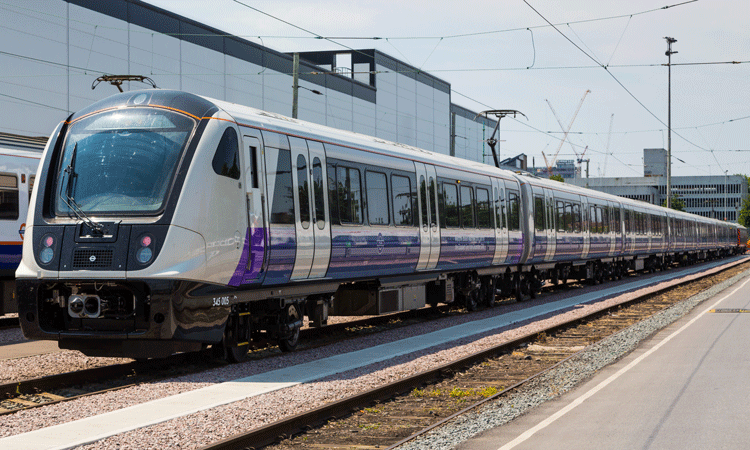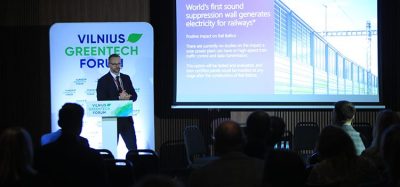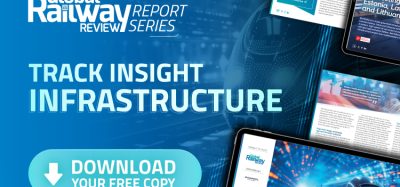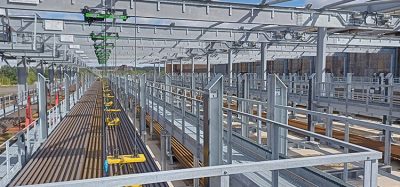How rail plays a huge role in the Midlands Engine area
Posted: 5 November 2018 | Mark Goldby | No comments yet
Stretching from Shropshire to Lincolnshire, with the M1, M6 and most of the major UK railway lines running through it, the Midlands sits at the very heart of the UK economy. Home to over 10 million people, 20 universities and 440,000 businesses, it is the largest UK economic area outside of London and the South East, with an annual economic value-added figure of over £200 billion. For Global Railway Review, Mark Goldby, Advanced Manufacturing Specialist within the UK’s Department for International Trade (DIT) and representative for the Midlands Engine, provides an overview of how rail development will help the region to thrive.


Aventra by Bombardier - designed, developed and manufactured in Derby (Credit TfL)
How does rail fit with the Midlands Engine’s vision for growth?
The Midlands Engine is a coalition of UK councils, combined authorities, local enterprise partnerships (LEPs), universities and businesses across the region, actively working with the government to build a collective identity, to enable us to present the Midlands as a competitive and compelling offer that is attractive at home and overseas. It is ultimately about making the Midlands a powerful engine for economic growth.
The UK rail industry is a growing market with over £200 billion worth of rail and infrastructure opportunities. Therefore, transport connectivity is a cornerstone of the Midlands Engine strategy. Our transport arm, Midlands Connect, has set out a 30-year plan for upgrading and future-proofing the Midlands’ transport network. It covers both road and rail. But as we increasingly encourage people out of their cars and onto trains, rail has an ever more important role to play. The challenge is we need to make rail travel as cheap, comfortable and convenient as using your own vehicle.
What are the major benefits of High-Speed Two (HS2) and how does the project impact the Midlands Engine vision?
HS2 is a once-in-a-generation rail revolution. This £56 billion project will reduce rail journey times between London, the Midlands and the North, bring the UK closer together and increase choice for over 30 million people about where they live, work and spend their spare time. We have full confidence that Phase One will be delivered between Birmingham and London in 2026, with Phase 2a to Crewe following in 2027 and the full Y-shaped network to Manchester and Leeds via the East Midlands in 2033.
The Midlands has six stations in all on the HS2 network: Birmingham Curzon Street, Interchange, Stafford, Stoke-on-Trent, the East Midlands Hub at Toton and Chesterfield.
The planned £500 million Birmingham Curzon station, part of the Midlands Engine plans, for example, will link to a new hub at Old Oak Common in north-west London, and the government states it will contribute to a £1.4 billion economic uplift for Birmingham.
Our challenge is to make sure we are well-prepared for the opportunities HS2 brings, before it arrives, rather than only getting into gear once the trains start running.
As the rail sector enters a digital age, what potential do you think technology and ‘intelligent’ solutions bring to the future of the UK’s rail industry?
Some of the advances in digital signalling and automated train operation will undoubtedly mean that we can run faster, more frequent and more reliable services. But we really need to walk before we can run on this issue. In some parts of the Midlands, like just outside Worcester, we’ve got signalling systems that haven’t changed for over half a century. We need to get today’s technology out onto our network, before we get too excited about what tomorrow could bring. Our pipeline of opportunities include upgrades and expansion projects that will do exactly that.
You recently attended InnoTrans; what did you expect to achieve from the event?
InnoTrans is of course an important event for us. We attended the show to promote the large variety of rail opportunities in the Midlands region and through our comprehensive Midlands Prospectus.
We organised some high-profile seminars for international businesses during the show where we showcased our strengths and capabilities in rail as a region and why it makes a compelling story to set your rail business up in our region. We are hopeful this will lead to some meaningful engagements with potential businesses who have an appetite to participate in the growth opportunities that the Midlands and UK have to offer.
What more needs to be done at this stage to ensure the Midlands Engine goals can be met?
We would always encourage more people to support and spread the word about our campaigns, but let’s be frank, money is what makes the world go round. We can have the best planned and pitched transport strategy you can imagine, but it’s no good us simply going to government with our caps in our hands and asking “can we have some cash for this now please?”. Of course, some of the money for our schemes will come from central government, but if we want to accelerate development in the Midlands, we need to explore all and alternative forms of funding and finance. If we do that, and our supply chain is at full complement, then I have complete confidence our goals will be met sooner rather than later.


Related topics
Digitalisation, High Speed Two (HS2), High-Speed Rail, Infrastructure Developments







